
These photographs show Chicago’s African-American community, primarily the South Side, and are taken by photographer John H. White, who went on to win the Pulitzer Prize for Photojournalism in 1982.
His portraits of everyday life stand the test of time, inviting the viewer to travel back a few decades, and see just how we lived.
In the 1970s, White was hired by the Environmental Protection Agency to document the lives of the black residents of Chicago. For years, White explored the city, making intimate and powerful pictures of neighbors and strangers, capturing Chicagoans in states of joy, sorrow, reverence, and celebration.
As White reflected recently, he saw his assignment as “an opportunity to capture a slice of life, to capture history.”
His photographs portray the difficult circumstances faced by many of Chicago’s African American residents in the early 1970s, but they also catch the “spirit, love, zeal, pride, and hopes of the community.”
.jpg)
A student at the Westinghouse Industrial Vocation School on Chicago’s West Side, May 1973.
White was awarded the Pulitzer Prize for Photojournalism in 1982 for his “consistently excellent work on a variety of subjects.” He was selected as a photographer for the 1990 project Songs of My People.
White has also won three National Headliner Awards, was the first photographer inducted into the Chicago Journalism Hall of Fame, was awarded the Chicago Press Photographer Association’s Photographer of the Year award five times, and, in 1999, received the Chicago Medal of Merit.
Hal Buell, the former head of the Associated Press Photography Service, noted that White is one of the best photographers at capturing the everyday vignette.
White has said that he lives by three words: faith, focus, flight. “I’m faithful to my purpose, my mission, my assignment, my work, my dreams. I stay focused on what I’m doing and what’s important. And I keep in flight—I spread my wings and do it.”
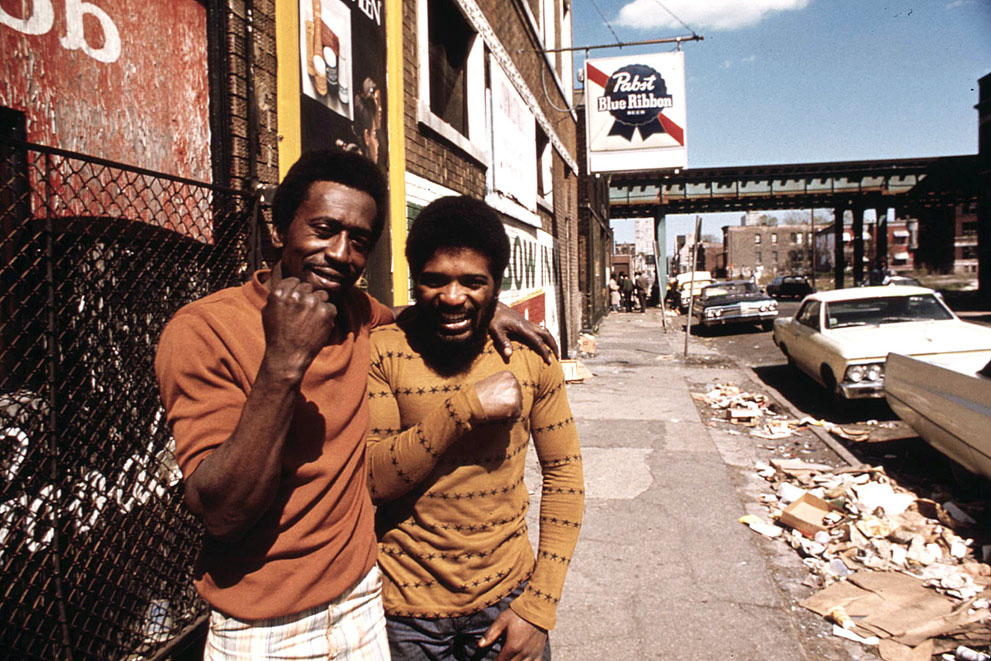.jpg)
Men pose on a South Side street, May 1974.
Chicago’s black population developed a class structure, composed of a large number of domestic workers and other manual laborers, along with a small, but growing, contingent of middle-and-upper-class business and professional elites.
In 1929, black Chicagoans gained access to city jobs and expanded their professional class. Fighting job discrimination was a constant battle for African Americans in Chicago, as foremen in various companies restricted the advancement of black workers, which often kept them from earning higher wages. In the mid-20th century, blacks began slowly moving up to better positions in the workforce.
.jpg)
South Side group of children in a playground at 40th and Drexel Boulevard, October 1973.
The Black Belt of Chicago was an area that stretched 30 blocks along State Street on the South Side and was rarely more than seven blocks wide.
With such a large population within this confined area, overcrowding often led to numerous families living in old and dilapidated buildings.
The South Side’s “black belt” also contained zones related to economic status. The poorest residents lived in the northernmost, oldest section of the black belt, while the elite resided in the southernmost section.
In the mid-20th century, as African Americans across the United States struggled against the economic confines created by segregation, black residents within the Black Belt sought to create more economic opportunity in their community through the encouragement of local black businesses and entrepreneurs.
During this time, Chicago was the capital of Black America. Many African Americans who moved to the Black Belt area of Chicago were from the Southeastern region of the United States.
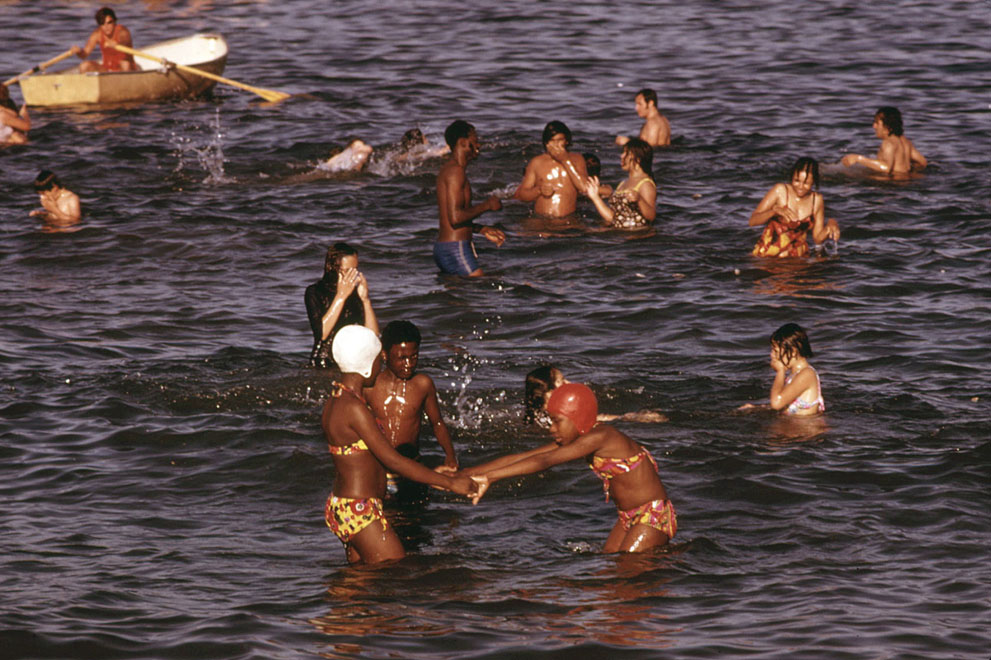.jpg)
Swimmers take to the water at 12th Street Beach on Lake Michigan, in August of 1973.
The migration expanded the market for African-American businesses. “The most notable breakthrough in black business came in the insurance field.”
There were four major insurance companies founded in Chicago. Then, in the early 20th century, service establishments took over.
The African-American market on State Street during this time consisted of barbershops, restaurants, pool rooms, saloons, and beauty salons.
African Americans used these trades to build their own communities. These shops gave the blacks a chance to establish their families, earn money, and become an active part of the community.
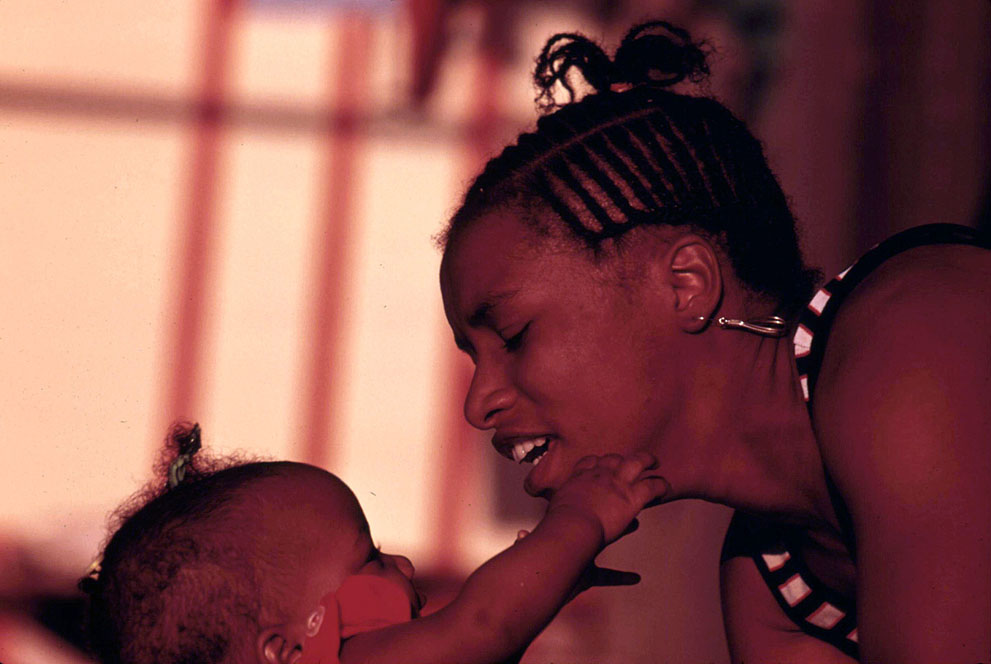.jpg)
Mother and child, during an outing at Chicago’s 12th Street Beach on Lake Michigan, August 1973.
.jpg)
Heavy traffic on the Dan Ryan Expressway in Chicago, Illinois, October 1973. At the time, it was the busiest stretch of road in the United States with 254,700 vehicles daily. The tall building in the background is the Sears Tower (now the Willis Tower), 110 stories high and the world’s tallest at the time it was completed, five months before this photograph was taken.
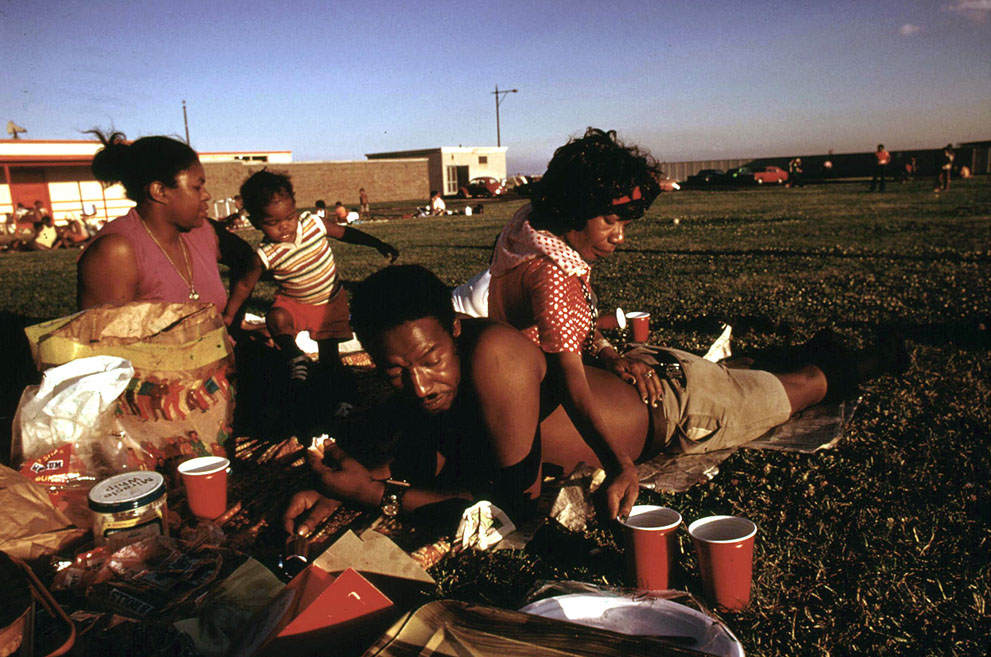.jpg)
A family enjoys a picnic at 12th Street Beach on Lake Michigan, in August 1973.
.jpg)
Sidewalk merchandise on Chicago’s South Side, June 1973.
.jpg)
Worshipers at Holy Angel Catholic Church on Chicago’s South Side, October 1973.
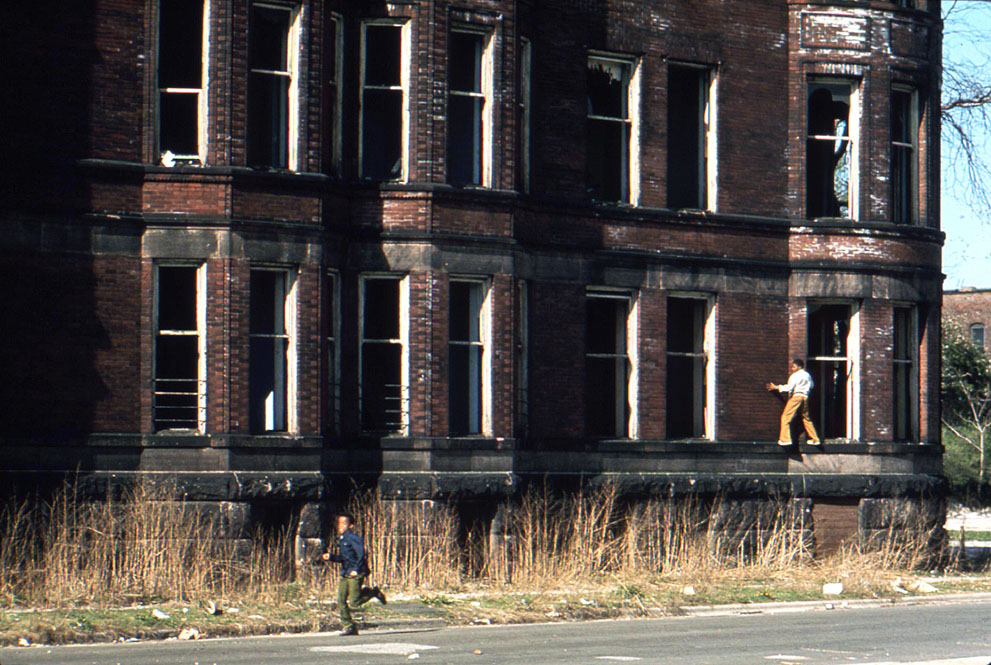.jpg)
Abandoned building on 37th And Prairie Street.
.jpg)
A band performs at the Lake Meadows Shopping Center in Chicago, in August of 1973. Not well known, they are sharing their music at home, hoping it will lead to greater recognition.
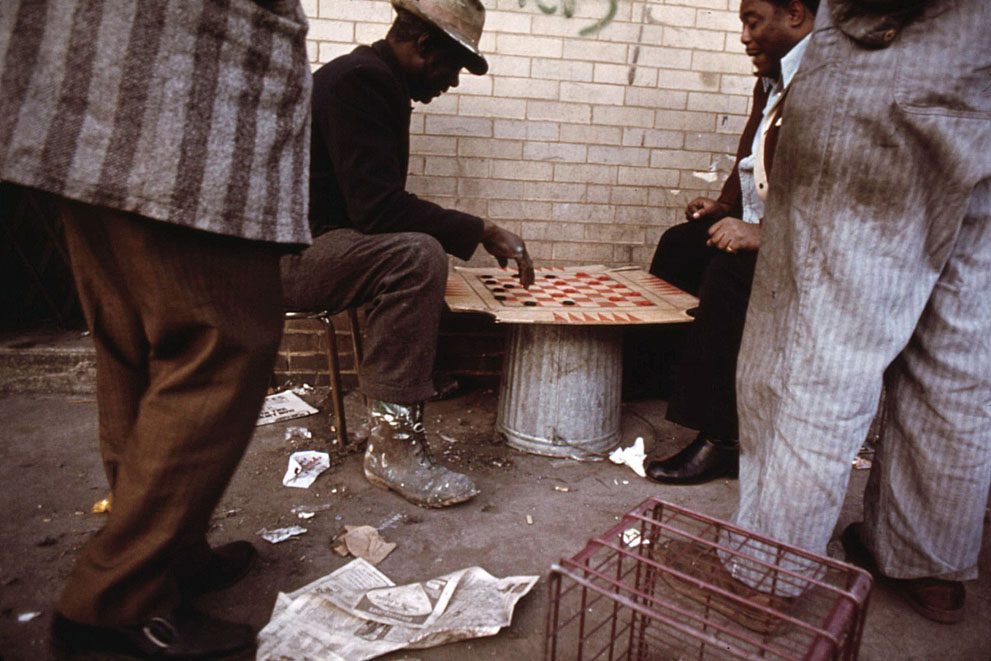.jpg)
Workers pass the time playing checkers on East 35th Street before going to work in Chicago, in May 1973.
.jpg)
Members of Chicago’s South Side community line a portion of Dr. Martin L. King Jr. Drive to watch the Bud Billiken Day Parade, August 1973. Hundreds of thousands turn out to watch and take part in the annual event. Bud Billiken Day started in 1929, to provide African-American youth living on the South Side a moment in the spotlight, a day each year to showcase their talents.
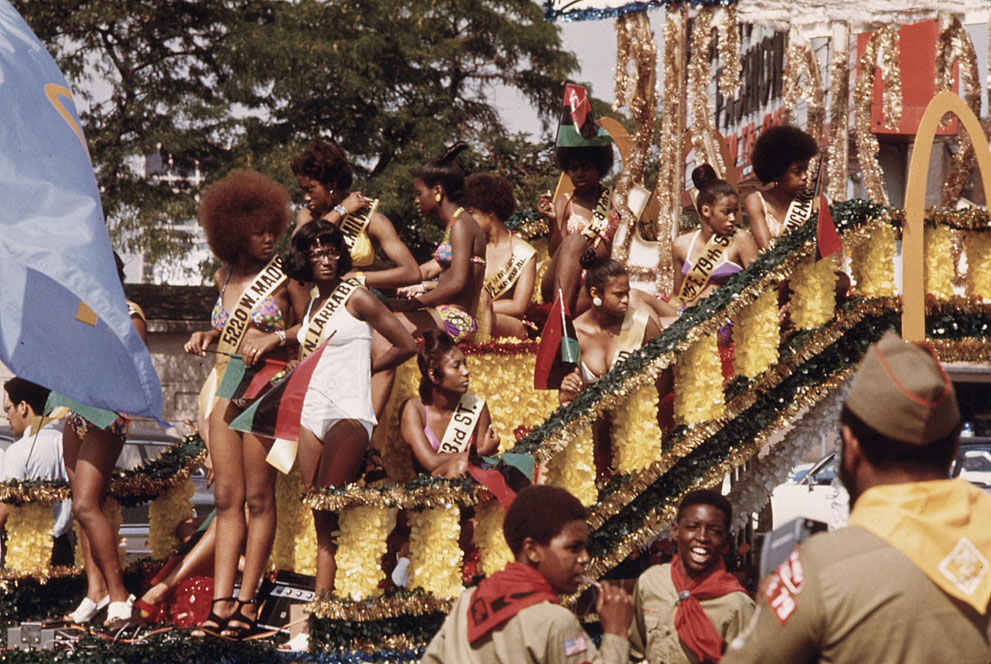.jpg)
Participants on a float during the Bud Billiken Day parade along Dr. Martin L. King Jr. Drive, August 1973.
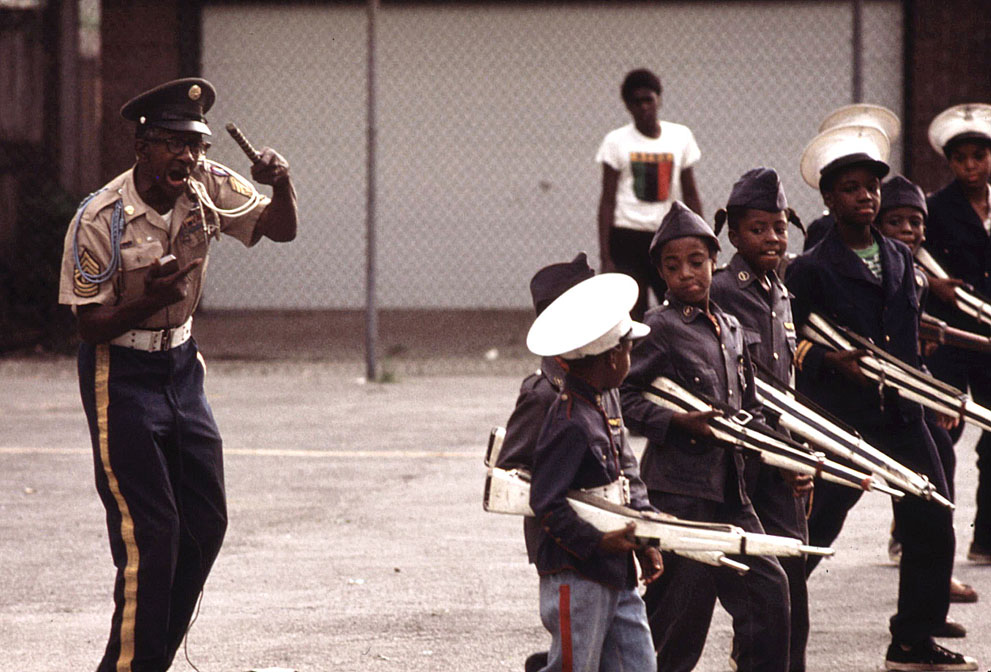.jpg)
The Kadats of America, a young drill team, perform on a Sunday afternoon at a community talent show on the South Side. The leader, Major General Acklin, is shown giving commands to the youngsters, in July 1973.
.jpg)
Members of the Kadats of America perform on a Sunday afternoon at a community talent show on the South Side, July 1973.
.jpg)
Reverend Jesse Jackson speaks on a radio broadcast from the headquarters of Operation Push, at its annual convention. One of the aims of the organization is to open the world of business to small black-owned businesses.
.jpg)
Street scene on 47th Street, May 1974.
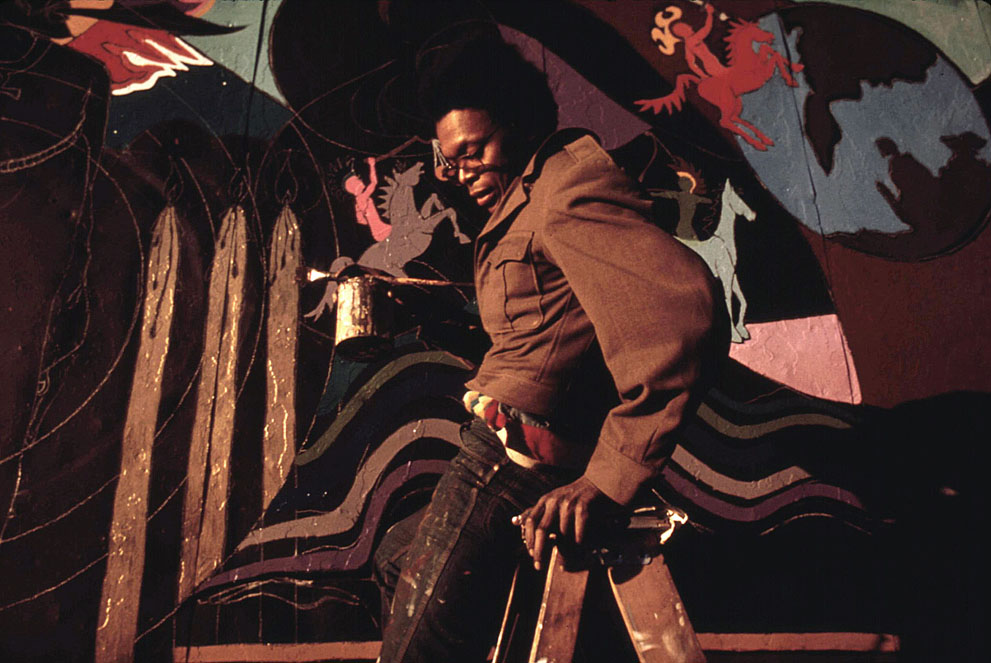.jpg)
Artist Ron Blackburn paints an outdoor wall mural at the corner of 33rd and Giles Streets in Chicago, in June 1973.
.jpg)
Woman selling “Have A Nice Day” balloons on a Chicago South Side street corner at Sox Park Baseball Field, June 1973.
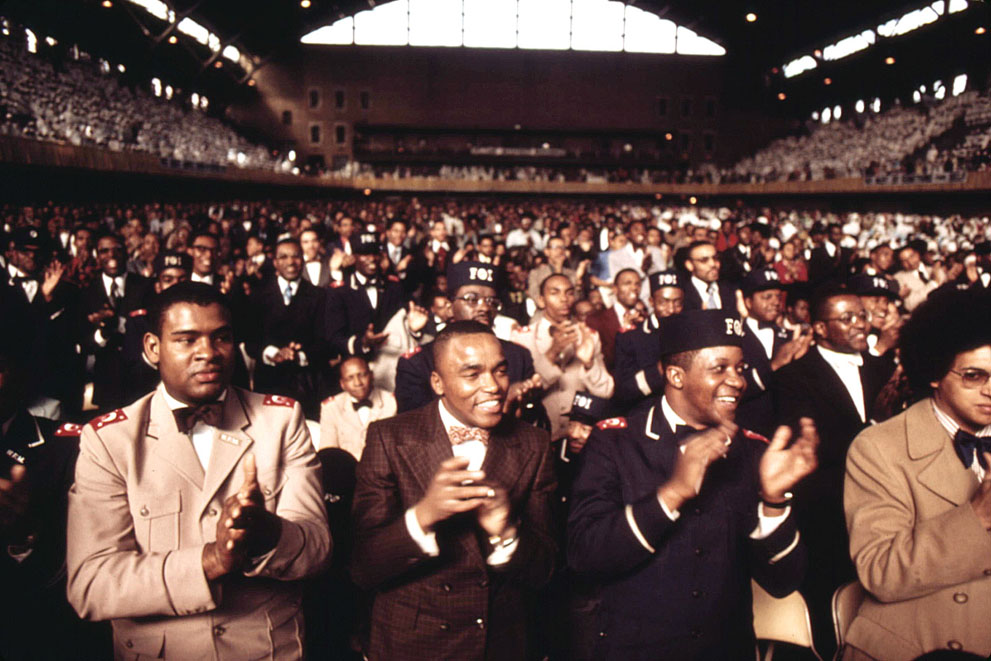.jpg)
A portion of a crowd of some 10,000 Muslims applauds Elijah Muhammad during the delivery of his Savior’s Day Message in Chicago, in March 1974.
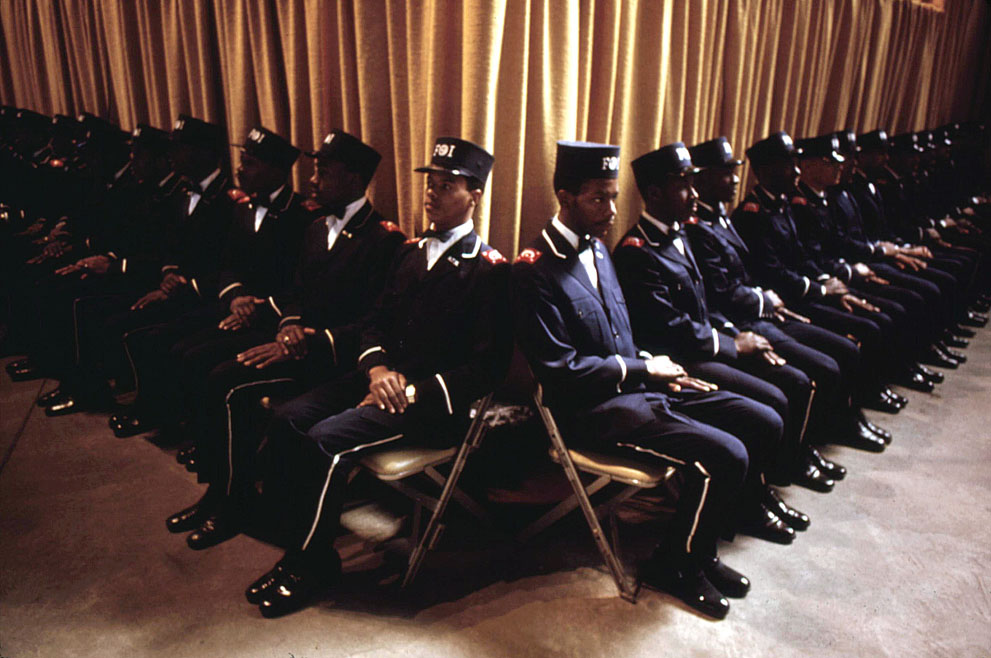.jpg)
“The Fruit Of Islam”, a special group of bodyguards for Muslim Leader Elijah Muhammad, at the base of the platform while Muhammad delivers his annual Savior’s Day Message in Chicago, March 1974.
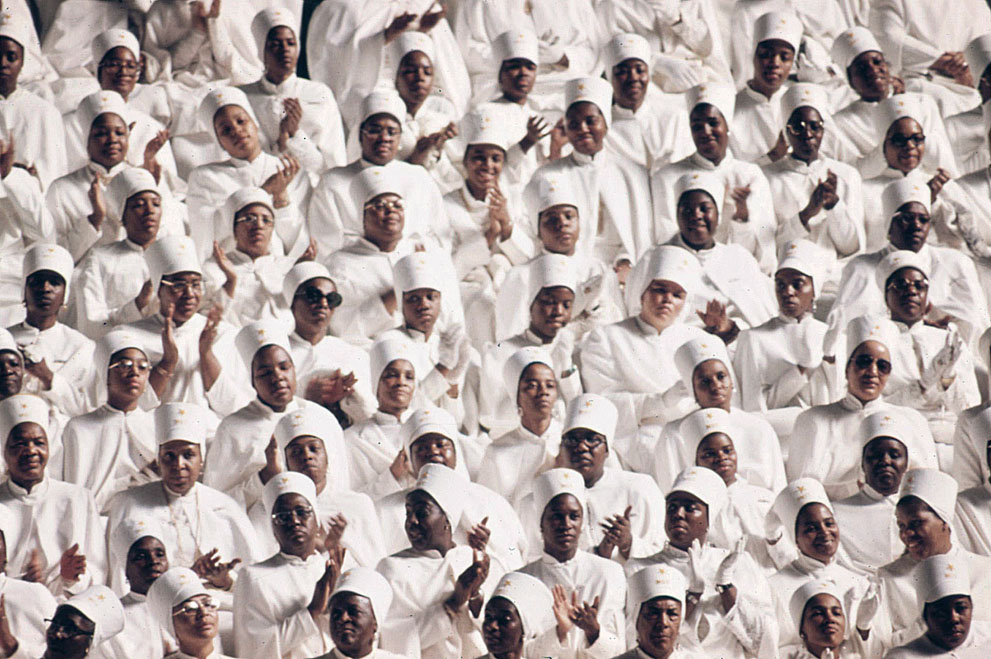.jpg)
Muslim women dressed in white applaud Elijah Muhammad during the delivery of his Savior’s Day Message in Chicago, March 1974.
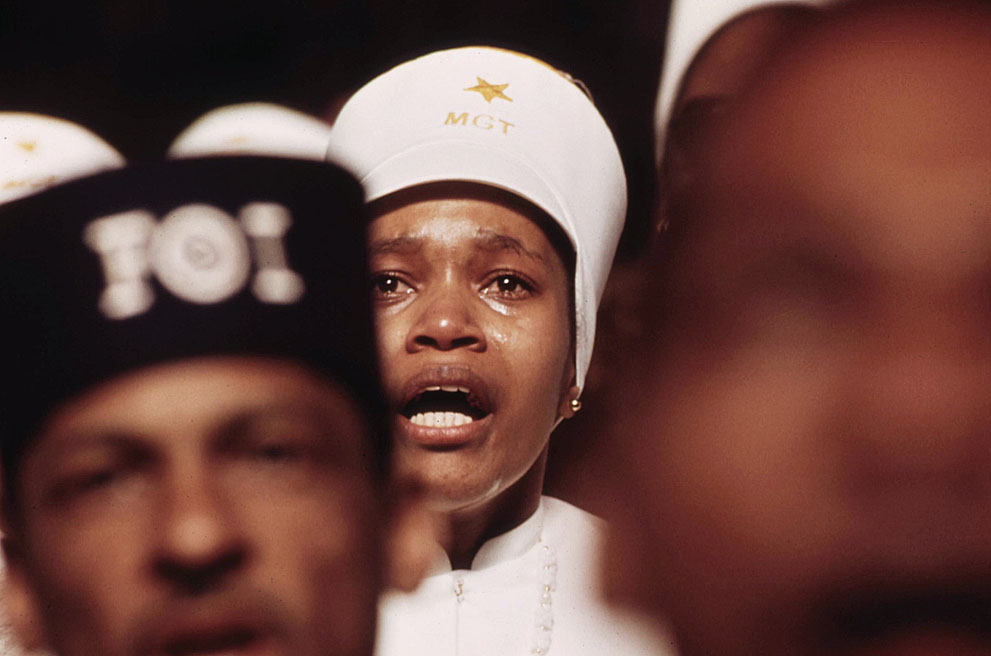.jpg)
Religious fervor is mirrored on the face of a Muslim woman listening to Elijah Muhammad’s Savior’s Day Message in Chicago, March 1974.
.jpg)
Youths play basketball at Stateway Gardens highrise housing project on the South Side, May 1973.
.jpg)
Youngsters cool off with fire hydrant water in the Woodlawn Community, June 1973.
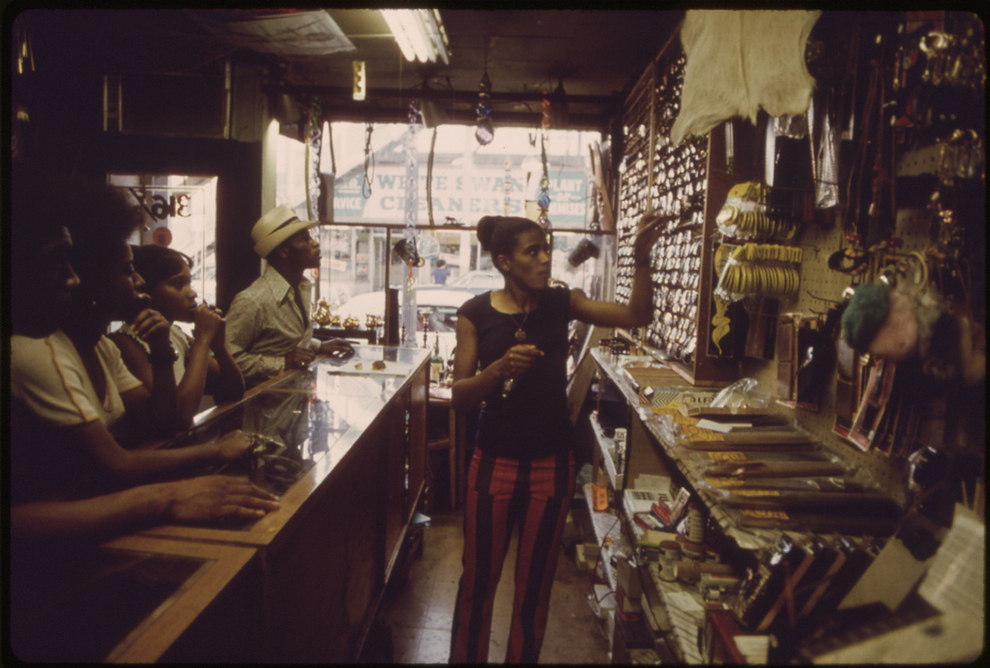
Black-owned business in Chicago’s South Side.
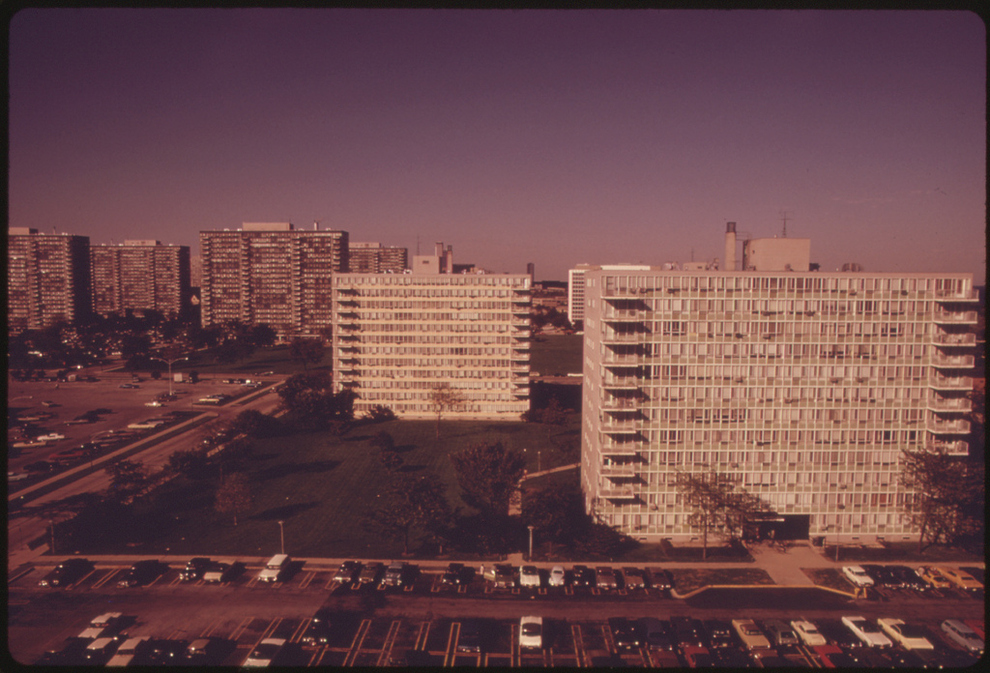
Lake meadows apartment complex in Chicago’s South Side inhabited 70% by Blacks.
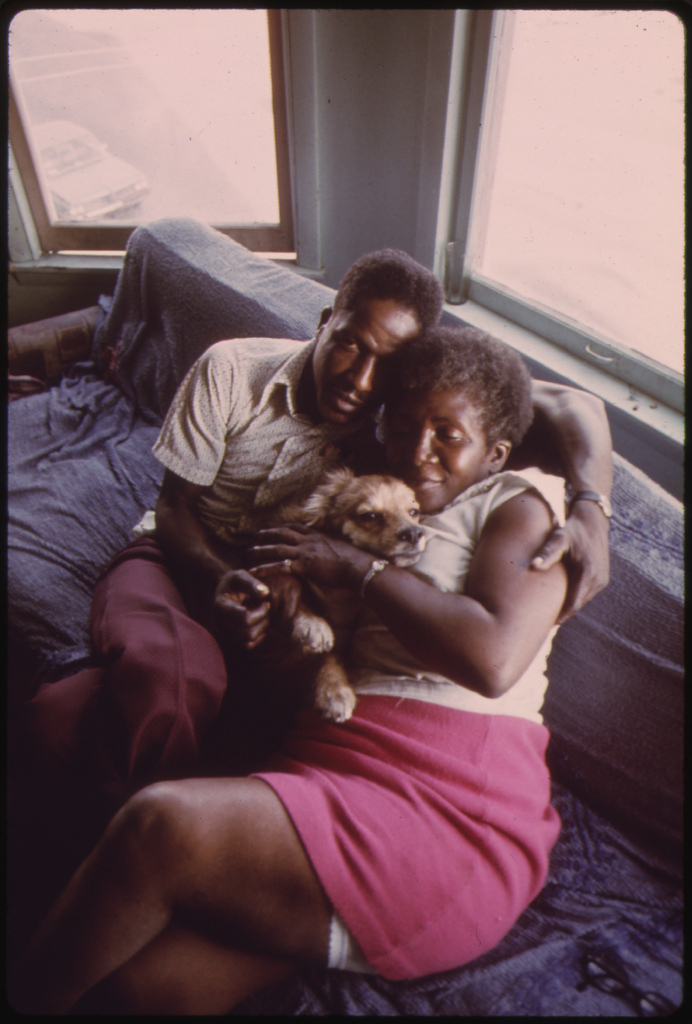
A couple and their dog in their apartment in South Side Chicago.

Black art and culture were one of the themes at the annual Black expo held in Chicago.

Voter registration drive was one aspect of Black expo.

Beauties with colorful hair grace a float during the annual Bud Billiken Day Parade along Dr. Martin l. King Jr. drive in Chicago’s South Side.

A young man showing his muscle during a small community program in Chicago in the South Side.

World heavyweight boxing champion Muhammad Ali, a black Muslim, attends the sect’s service to hear Elijah Muhammad deliver the annual savior’s day message in Chicago.
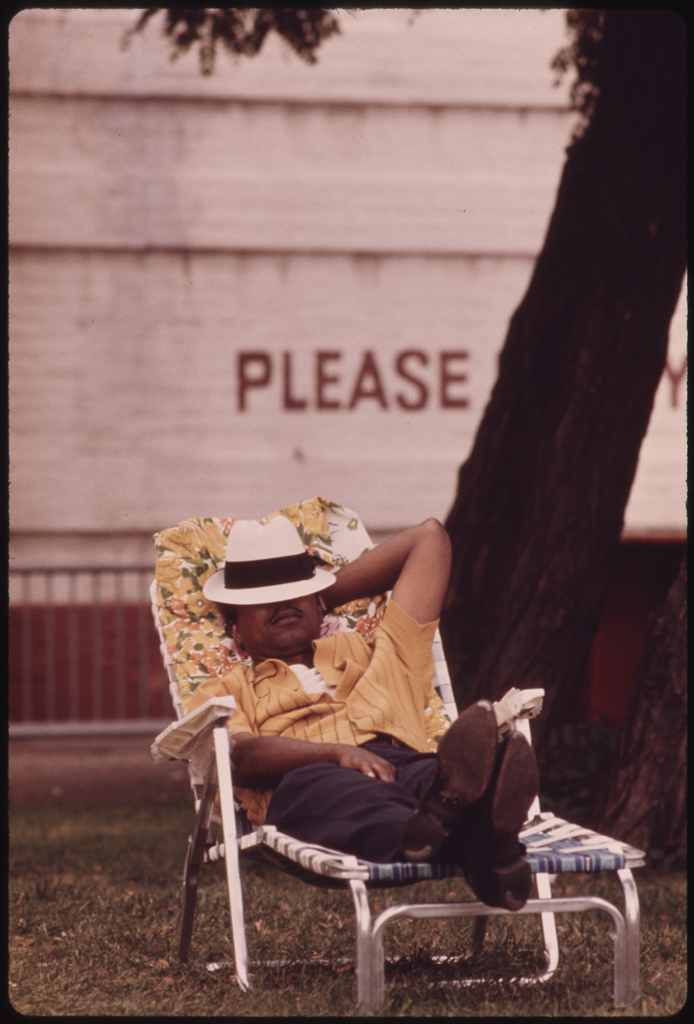
A man enjoying a nap on a chaise lounge in Chicago’s South Side.

Black products and services were one of the themes at the annual black expo held in Chicago.
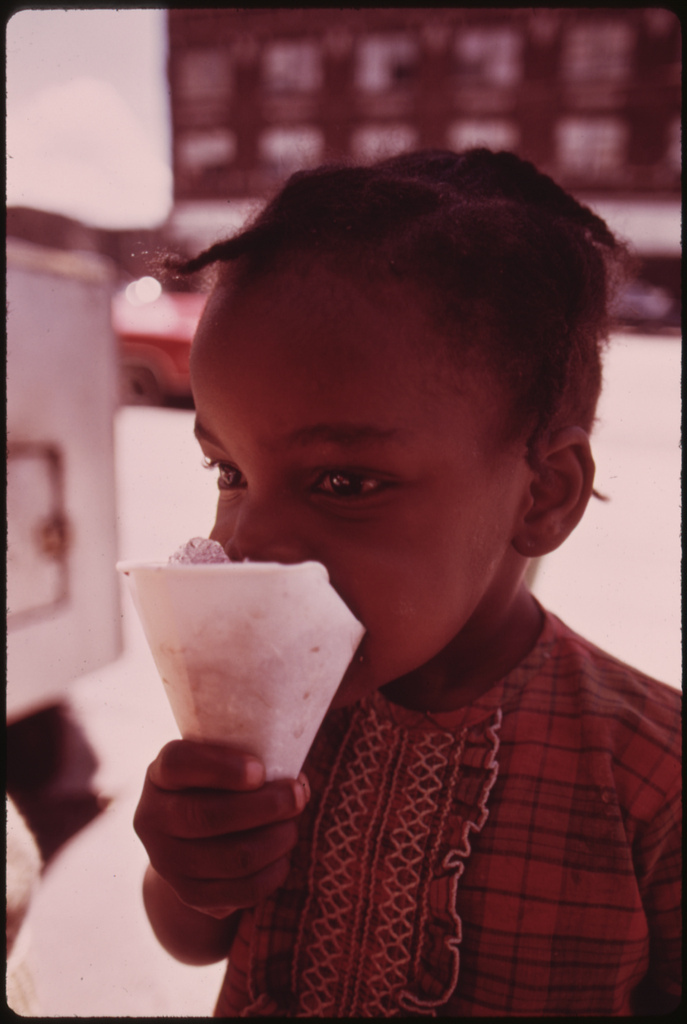
A child savors a snow cone just received from a sidewalk vendor on Chicago’s West Side.

A swimsuit-clad woman enjoys her summer outing at Chicago’s 12th Street Beach in Lake Michigan.
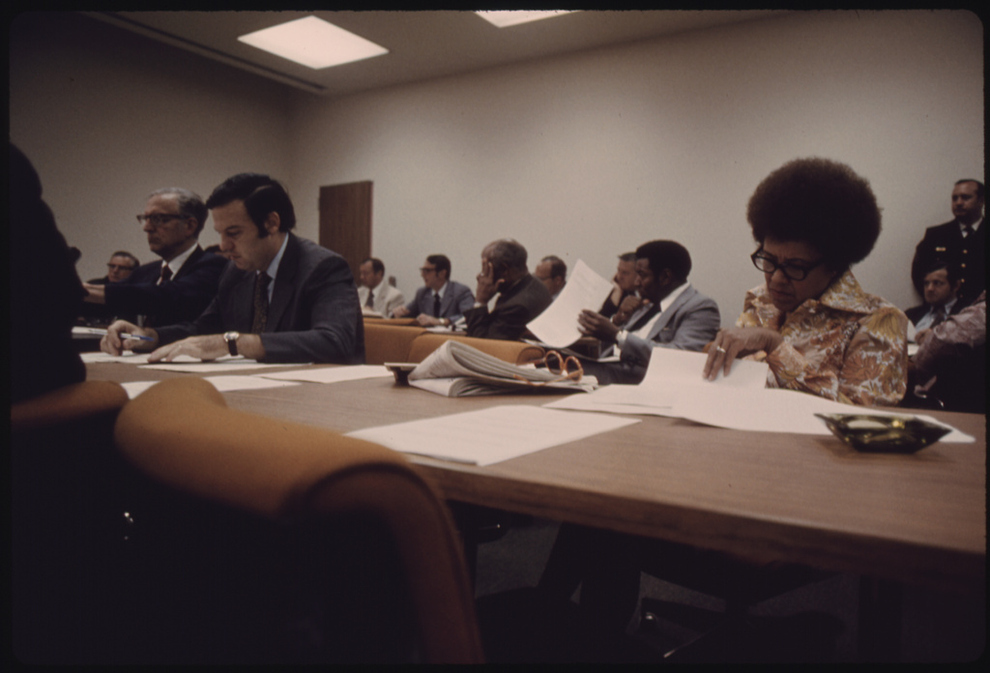
Black members of the Chicago City Council during a budget hearing.

Youngsters performing on an empty lot at 5440 South Princeton Avenue in Chicago’s South Side.
(Photo credit: John H. White / National Archives / Wikimedia Commons / Library of Congress).
Updated on: May 29, 2022
Any factual error or typo? Let us know.



